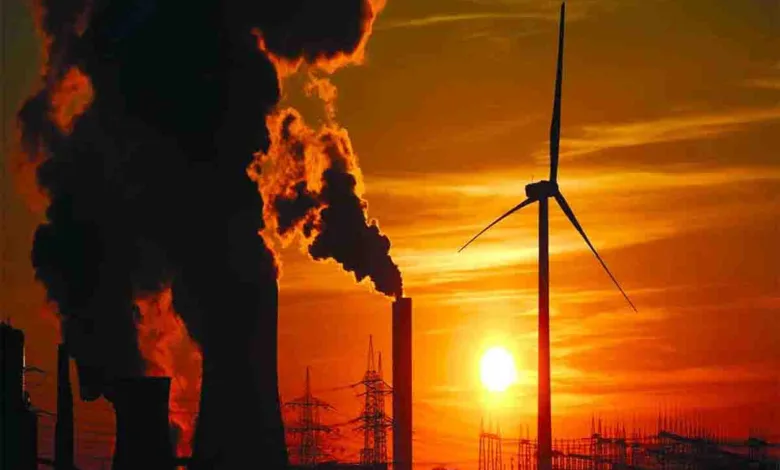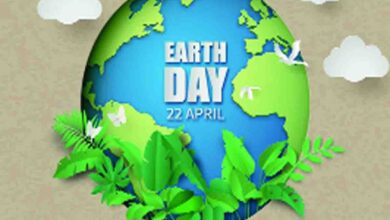Methane is burning the future of life

Friday, 02 June 2023 | Vir Singh | in Guest Column
GUEST COLUMN
 Vir Singh
Vir Singh
If the human-caused climate change on our only known living planet continues unabatedly, then the integrity of life will soon start breaking down. In the Anthropocene, the sixth mass extinction of species is also going on and it is estimated that by the end of this century, about half of the species on earth will haplessly go extinct. If the global warming-led climate change persists like this, this fateful epoch in the evolutionary history of planet is likely to turn the planet into a fireball in three-four centuries bringing the story of life assume its “The End”.
Human activity in the back, climate change in the front! February this year marked the warmest month in known climate history on Earth, and the months ahead are set to create unique heat stories, signs of which have started pouring in.
Meanwhile, in addition to the unabated increase in carbon dioxide in the atmosphere, climate experts are eyeing yet another causal agent of global warming. That’s methane. The National Oceanic and Atmospheric Administration (NOAA) recently reported that 2022 witnessed the fourth highest annual increase in methane emissions to the atmosphere, which is part of the overall increase in greenhouse gases.
Although carbon dioxide has largely been the focus of global warming, scientists are more concerned about methane in particular after the Glasgow Climate Agreement. This is also because methane is capable of imparting 87 times more warming effect than carbon dioxide on a 20-year scale. So when scientists are calling for a 45 per cent reduction in carbon emissions over a decade, controlling methane emissions appears to be one of the best options.
Major sources of methane emissions include oil wells, natural gas leaks, landfills, livestock, manure ponds, swamps, and waterlogged rice fields. In fact, wherever there is a lack of oxygen in the process of decomposition of organic matter followed by the proliferation of microorganisms in this process, the emission of carbon is less in the form of carbon dioxide and more in the form of methane. Properly managed, methane is a useful fuel gas, but its increasing concentration in the atmosphere is burning the future of life on Earth. It is very important to slow down the methane formation process in nature’s carbon cycle for controlling the climate change process.
NOAA administrator Rick Spinrod said in a report: “Observations collected by NOAA scientists in the year 2022 show that greenhouse gas emissions are increasing at an alarming rate and will remain in the atmosphere for thousands of years. It is time to stop greenhouse gas pollution to control and reduce man-made emissions as we move towards a climate-friendly world.”
Methane is projected to increase by 14 parts per billion to 1,911.9 ppb (parts per billion) in 2022. It was increased by 15.20 ppb in the year 2020 and 17.75 ppb in 2021. “More than 50 percent methane emissions are coming from human activities, such as oil and gas extraction, agriculture, waste management, and landfills,” says Benjamin Poulter, a scientist working at NASA.
The exact amount of methane produced by human activity and natural sources over the years is not known, but scientists say ecosystems begin to emit more methane due to warming. Schindel, a former NASA climate scientist and professor at Duke University, said, “If the rapid increase in methane emissions is being caused by wetlands and natural systems, that’s very scary because there’s not much we can do to stop it.” If methane leaks from fossil fuel fields, we can make rules. But we can’t make rules about what swamps do.”
Preliminary data from NOAA shows the average ocean temperature since early April at 21.1 degrees Celsius, only slightly higher than the previous high of 21 degrees in 2016. New data show that 2022 is on track to be the fifth warmest year since weather records began. The year 2023 is, however, likely to be even hotter, as a climate phenomenon called La Niña – which has a cooling effect on global temperatures – kicks off.
Between the years 2020 and 2022, three consecutive La Niña episodes occurred in the Northern Hemisphere. In spite of the La Niña triple, the European Union’s climate monitoring service states that the year 2022 was set to be the fifth warmest year on record. Global average temperatures over the past three years have been near record levels, but would have been even higher without the cooling effect of prolonged La Niña. This year, the opposite of La Nina is expected to be an El Niño pattern that could increase the risk of extreme weather conditions and further challenge global heat records. A mere 0.2 oC temperature rise, as likely due to El Niño patterns, would add about 20 per cent to the current global temperature increase from climate change.
NOAA senior scientist Mike McFadden agreed that “the prolonged La Niña was driving down global average surface temperatures even as greenhouse gases in the atmosphere increased. Now that it is out, we are likely to see the climate change signal coming through loud and clear.”
The NOAA report states that carbon dioxide and nitrous oxide with a warming effect of 285 times more have also recorded a significant increase in 2022. Carbon dioxide levels are projected to rise to 417.06 ppm (parts per million) in 2022, which is 50 percent more than pre-industrial levels. Nitrous oxide, which according to NOAA is the third most important greenhouse gas emitted by human activities, has increased to 335.7 ppb, mainly due to the indiscriminate use of chemical fertilizers in the agriculture sector.
Minimizing dependence on fossil fuels and reducing the number of ruminants are certainly suitable ways to reduce methane in the atmosphere and limit warming. The International Energy Agency estimates that by 2022 methane emissions could be reduced by up to 70 percent with current technology.
(The author is professor emeritus, environmental science, GB Pant University of Agriculture and Technology. Views expressed are personal)





